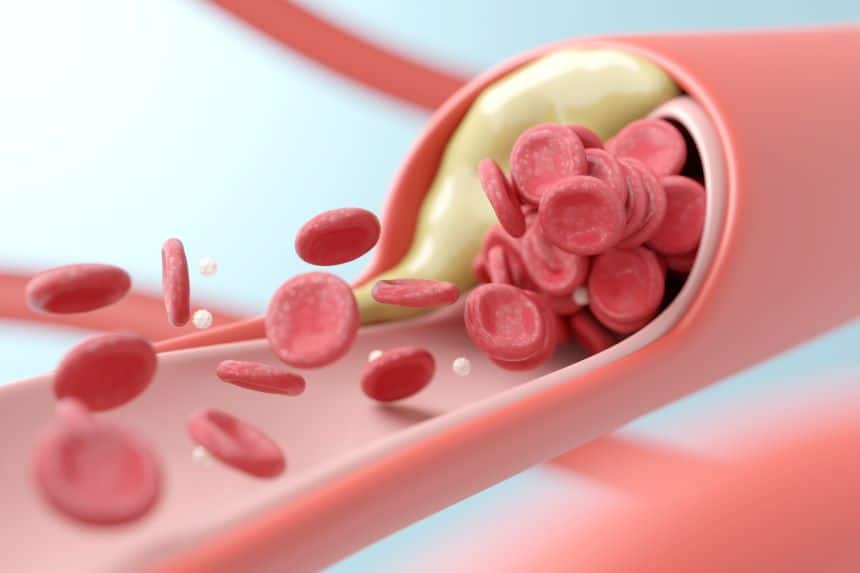
Everyone knows that high blood lipids can pose serious health risks both in the short and long term. Beyond general health effects, this condition also impacts hormones and the reproductive system in both women and men.
If you are planning a pregnancy or struggling with infertility, understanding how to manage blood lipids can help maintain hormone balance and significantly increase your chances of conception and having a healthy child.
What Are High Blood Lipids?
High blood lipids (Hyperlipidemia) refer to abnormally elevated levels of fats in the bloodstream, particularly LDL cholesterol and triglycerides, which increase the risk of cardiovascular disease. The main causes include a diet high in saturated fats, lack of physical activity, overweight, smoking, excessive alcohol consumption, genetic predisposition, or certain underlying conditions such as diabetes, kidney disease, or hypothyroidism.
Medically, blood lipids are classified into three main types:
- LDL (Low-Density Lipoprotein): Known as “bad cholesterol,” excess LDL accumulates in blood vessels, increasing the risk of narrowing arteries. Normal levels should not exceed 100 mg/dL.
- HDL (High-Density Lipoprotein): Known as “good cholesterol,” HDL helps transport LDL back to the liver, reducing heart disease risk. Men should have HDL >50 mg/dL, and women >40 mg/dL.
- Triglycerides: High triglycerides also increase cardiovascular risk. Normal levels should not exceed 150 mg/dL.
Effect of High Blood Lipids on Overall Health
Early-stage hyperlipidemia often shows no obvious symptoms, but over time, it can significantly affect health:
- Cardiovascular disease: Excess lipids accumulate along arterial walls, causing hardening and narrowing, which can reduce blood flow. If coronary arteries are affected, it may lead to ischemic heart disease, chest pain, or even a heart attack.
- Stroke: Fat accumulation in cerebral arteries can block blood flow to the brain, causing partial paralysis, stroke, or cognitive decline, posing life-threatening risks.
- Liver and pancreas issues: Increases risk of fatty liver disease, which can progress to cirrhosis, liver failure, or liver cancer over time, as well as acute pancreatitis.
- Metabolic disorders and diabetes: Lead to insulin resistance, overweight, and central obesity, raising the risk of type 2 diabetes and metabolic syndrome.
Effects of High Blood Lipids on Male and Female Hormones
In addition to general health effects, elevated blood lipids also impact the fertility of both men and women.
Effects on Women
1. Hormonal imbalance affecting ovulation
High blood lipids disrupt female hormones, particularly estrogen and progesterone, which regulate ovulation and menstruation. This can result in irregular cycles, inconsistent ovulation, and an increased risk of infertility.
2. Risk of PCOS (Polycystic Ovary Syndrome)
High blood lipids are associated with obesity, a major factor in developing PCOS. Women may develop multiple ovarian cysts, leading to chronic anovulation, a common cause of infertility.
3. Impaired ovarian and reproductive function
Excess fat accumulation can reduce ovarian efficiency, affecting egg production and quality, as well as endometrial function. This increases the risk of miscarriage and other pregnancy complications.
Effects on Men
1. Reduced sperm quality
High blood lipids negatively affect sperm production, leading to lower sperm count, reduced motility, abnormal morphology, and DNA damage, all of which decrease the chances of successful fertilization.
2. Impaired sexual function
Men with hyperlipidemia often have reduced testosterone levels, affecting mood, libido, and sexual performance, thereby increasing the risk of infertility.
3. Narrowed blood vessels in reproductive organs
High blood lipids contribute to atherosclerosis, narrowing blood vessels and reducing blood flow, including to the penis, affecting erections and sexual performance.

How to Control Blood Lipids for Optimal Fertility
If you are planning to have a child and are concerned about high blood lipids and obesity affecting fertility, regular monitoring of hormones and blood lipid levels is essential. Managing these factors effectively can significantly improve your chances of a successful pregnancy. Lifestyle modifications can help restore normal blood lipid levels:
1. Adjust your diet
- Reduce saturated and trans fats such as fried foods, packaged pastries, and fatty meats, which increase LDL cholesterol and accumulate in arteries.
- Increase consumption of healthy fats like olive oil, salmon, avocado, and nuts to reduce LDL and raise HDL.
- Eat more vegetables, fruits, and whole grains to increase fiber, limit fat absorption, and control blood sugar, as high sugar intake can worsen insulin resistance and contribute to PCOS in women.
2. Exercise regularly to maintain healthy weight
Regular physical activity, including brisk walking, running, cycling, or swimming, helps burn excess fat, reduce blood cholesterol, balance hormones, improve blood flow to reproductive organs, and enhance sperm quality in men. Aim for at least 150 minutes per week.
3. Annual health check-ups
Regularly monitor blood lipid levels to track LDL, HDL, triglycerides, and total cholesterol. Early detection allows for lifestyle adjustments or treatment to reduce cardiovascular risks.
Understanding the connection between blood lipids, hormones, and fertility makes it clear that managing fat levels is not only vital for general health but also for improving reproductive outcomes. Begin self-care today to support a smooth path to conception.
For couples planning a pregnancy, VFC Center (V Fertility Center) offers comprehensive preconception health assessments and expert guidance on reproductive health, fertility treatments, and advanced technologies, including preimplantation genetic diagnosis.
Article by Dr. Nannapat Parosiyanont
Contact or Book a Consultation:
VFC Center – V-Fertility Center
Hotline: 082-903-2035
LINE Official: @vfccenter

The team of specialists in obstetrics and gynecology and reproductive medicine





No Comments
Sorry, the comment form is closed at this time.